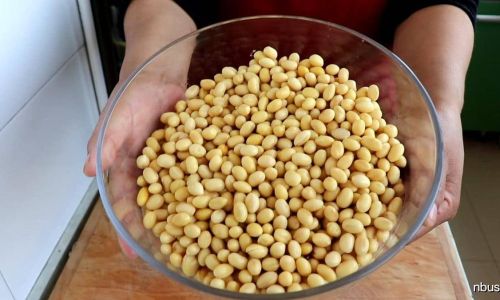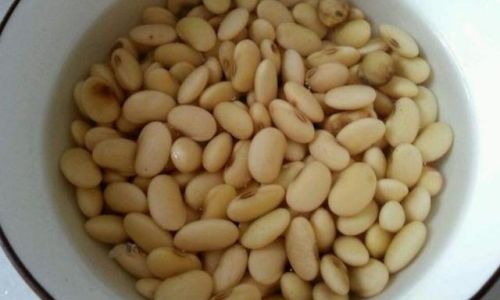Introduction
Soybeans, known scientifically as Glycine max, are a versatile legume that holds immense nutritional and culinary value. They are a rich source of protein, fiber, vitamins, and minerals, making them a staple in diets worldwide. From tofu and tempeh to soy milk and miso, soybeans are integral to various cuisines and food products. However, preserving soybeans properly is crucial to maintaining their quality, freshness, and nutritional benefits. Improper storage can lead to spoilage, loss of nutrients, and the development of harmful microorganisms. This comprehensive guide will delve into various methods of preserving soybeans, ensuring they retain their optimal condition for extended periods.
Understanding Soybean Storage Basics
Before diving into specific preservation techniques, it’s essential to understand the fundamental principles of soybean storage. Soybeans contain about 20% moisture when harvested, which needs to be reduced to about 12% or less for long-term storage. High moisture content accelerates the growth of mold, bacteria, and insects, leading to spoilage. Therefore, drying soybeans thoroughly is the first step in effective preservation.

Temperature and humidity also play pivotal roles. Storing soybeans in a cool, dry environment slows down biochemical reactions that can degrade the beans’ quality. Ideally, temperatures should be maintained between 40°F to 50°F (4°C to 10°C), with relative humidity kept below 65%.
Additionally, proper packaging is vital. Airtight containers or vacuum-sealed bags prevent oxygen exposure, which can oxidize fats and reduce shelf life. Light, especially ultraviolet (UV) rays, can also degrade the quality of soybeans, so opaque containers are preferable.
Harvesting and Initial Drying
-
Timing the Harvest
Harvesting soybeans at the right stage is crucial. Pods should be fully mature, with beans that are firm and have lost their green color, turning yellow or brown. Harvesting too early can result in beans with high moisture content and lower nutritional value, while harvesting too late may lead to pod shattering and loss of beans. -
Field Drying
After harvesting, soybeans can be dried in the field by leaving them on the plants for a few days under sunny conditions. This natural drying process helps reduce moisture content. However, constant monitoring is necessary to prevent over-drying or damage from weather elements like rain. -
Artificial Drying
For a more controlled environment, soybeans can be dried artificially using mechanical dryers. These dryers use heated air to quickly reduce moisture content. The temperature and duration of drying should be carefully monitored to avoid damaging the beans.
Post-Harvest Handling
-
Cleaning
Once dried, soybeans should be cleaned to remove any impurities such as dirt, chaff, and broken beans. This can be done using mechanical cleaners or by hand for smaller quantities. Clean beans store better and are less susceptible to contamination. -
Grading
Grading soybeans based on size, color, and quality ensures uniformity, which is important for both storage and marketing. High-quality beans fetch better prices and have a longer shelf life. -
Conditioning
Conditioning involves adjusting the moisture content of soybeans to the optimal level for storage. This can be done through further drying if necessary or by using humidity-controlled environments.
Storage Methods
There are several methods for storing soybeans, each with its own set of advantages and disadvantages. The choice of method often depends on the quantity of soybeans, available resources, and the desired storage duration.
-
Bulk Storage
Bulk storage is suitable for large quantities of soybeans, typically in commercial or large-scale farming operations. It involves storing soybeans in large bins or silos that are specifically designed for long-term storage.- Advantages: Cost-effective for large volumes, easy to manage with mechanized equipment.
- Disadvantages: Requires specialized storage facilities, higher risk of pest infestation and moisture accumulation if not managed properly.
Tips for Bulk Storage:

- Use bins or silos made of non-corrosive materials.
- Ensure proper ventilation to maintain consistent temperature and humidity.
- Regularly inspect for signs of moisture, pests, and mold.
- Use fumigation if necessary to control pests.
-
Bag Storage
Bag storage is a versatile option suitable for both small-scale and commercial use. Soybeans can be stored in woven polypropylene or polyethylene bags, which are durable and provide a degree of moisture protection.- Advantages: Easy to handle and transport, suitable for various quantities.
- Disadvantages: Bags can tear or become permeable over time, allowing moisture and pests to enter.
Tips for Bag Storage:
- Use high-quality, moisture-resistant bags.
- Stack bags in a cool, dry, and well-ventilated area.
- Place pallets or wooden sheets between layers of bags to prevent moisture absorption from the ground.
- Regularly check bags for tears, leaks, and signs of infestation.
-
Canister or Container Storage
For smaller quantities, soybeans can be stored in airtight containers such as glass jars, metal cans, or plastic containers with tight-fitting lids. This method is ideal for home use or small-scale farming operations.- Advantages: Provides excellent protection against moisture, pests, and light.
- Disadvantages: Limited capacity, can be costly for large quantities.
Tips for Container Storage:
- Choose containers made of materials that do not react with soybeans (e.g., avoid using containers previously used for storing oils or chemicals).
- Ensure containers are clean and dry before use.
- Label containers with the date of storage and quantity.
- Store containers in a cool, dark place.
-
Refrigerated Storage
Refrigerated storage extends the shelf life of soybeans by significantly slowing down biochemical reactions and microbial growth. This method is particularly useful for soybeans intended for immediate or near-term use.- Advantages: Extends shelf life, maintains freshness and nutritional quality.
- Disadvantages: Requires continuous refrigeration, which can be energy-intensive and costly.
Tips for Refrigerated Storage:
- Use airtight containers or vacuum-sealed bags to prevent freezer burn.
- Store soybeans in the coldest part of the refrigerator or freezer.
- Monitor temperature regularly to ensure it remains consistent.
- Consume soybeans within a reasonable timeframe to avoid nutrient loss due to prolonged storage.
-
Modified Atmosphere Packaging (MAP)
MAP involves storing soybeans in packaging that has been flushed with a modified atmosphere, typically a mixture of nitrogen, carbon dioxide, and oxygen at controlled levels. This method extends shelf life by reducing the oxygen available for microbial growth and oxidation.- Advantages: Extends shelf life significantly, maintains quality and freshness.
- Disadvantages: Requires specialized packaging and equipment, which can be costly.
Tips for MAP:
- Use packaging materials that are compatible with MAP.
- Ensure the packaging is properly sealed to maintain the modified atmosphere.
- Monitor the package for any signs of leakage or damage.
Monitoring and Maintenance
Regardless of the storage method chosen, regular monitoring and maintenance are essential to ensure soybeans remain in optimal condition. This includes:
- Temperature and Humidity Control: Regularly check and adjust temperature and humidity levels to maintain optimal conditions.
- Pest Control: Inspect stored soybeans regularly for signs of pest infestation and take appropriate measures, such as fumigation or using pest-resistant packaging.
- Moisture Content Monitoring: Periodically test the moisture content of soybeans to ensure it remains within safe limits.
- Visual Inspection: Regularly inspect soybeans for signs of mold, discoloration, or other signs of spoilage.
- Rotation: Use a first-in, first-out (FIFO) system to ensure older soybeans are used first, reducing the risk of spoilage.
Conclusion
Preserving soybeans effectively requires a combination of proper harvesting, drying, cleaning, grading, and storage methods. By understanding the fundamental principles of soybean storage and choosing the right method for your needs, you can ensure that soybeans retain their quality, freshness, and nutritional benefits for extended periods. Regular monitoring and maintenance are key to preventing spoilage and maintaining optimal storage conditions. With the right approach, soybeans can be a reliable and nutritious staple in your diet or business for years to come.





0 comments